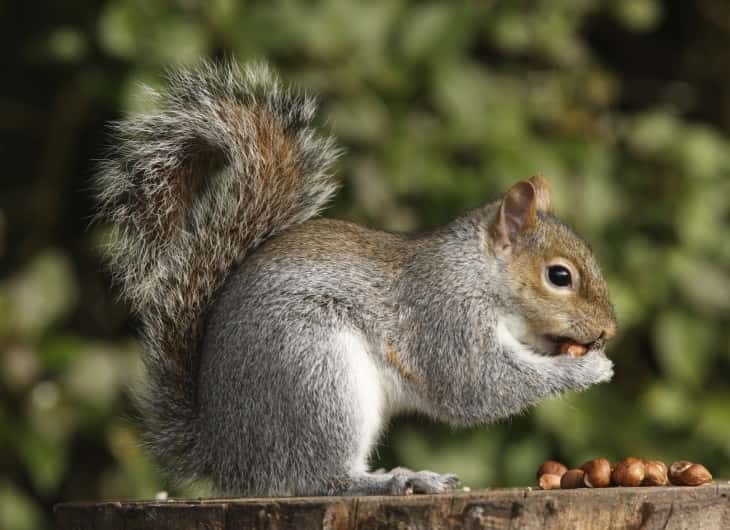The Squirrel and Rat Fall Breeding Cycles
September 7, 2016Squirrel and rat removal during cold weather
October 14, 2016
While many animals are busy each fall preparing to hibernate, making soft downy nests to sleep the winter days away, squirrels take advantage of the autumn harvest of nuts and seeds for a very different purpose. They will be spending their winters awake and active, and food (other than the bird feeders that they like to raid) is relatively scarce. So they are busy building up their winter pantries. Typically, they need a place that is dry, warm and hidden away. Attics are one of their favorite choices.
How Squirrels Get into Attics
Squirrels are excellent climbers, and can reach your roof by jumping from nearby limbs or by climbing up and down your siding. They can exploit any gap or hole in your siding, uncovered vents in the eaves, or chimneys with gaps or holes. From there, they can enter the space inside your eaves, the insides of your walls and your attic.
What Squirrels Do to an Attic
As a rodent, squirrels need to be constantly chewing to keep their front teeth from overgrowing. In the wild, they chew on twigs. In your attic, they may chew on electrical wires, siding, paneling and insulation. They also tend to use the bathroom wherever they are, which can cause damage to your attic and potential disease risk to anyone who spends time in that room. Their storage caches are typically tucked away, and they will shred your insulation or wall to be able to carefully place their food treasures inside.
How to know if you Have Squirrels in your Attic
Squirrels are not the quietest of house guests. You will likely hear them running on your roof or in your attic all day and some of the night. They are fall breeders, so they may consider using your attic for the dual purpose of a nursery and a pantry. If you cannot catch them in your attic, sit outside and watch to see if you can catch them running on and off of your roof or walls.
Calling a Professional
Companies for Wildlife Removal Services are your best bet for removal of squirrels from your attic for any purpose. In addition to removing them safely, they can analyze the location of their entrances or exits to make sure they are sealed as well as making sure that there are no stranded baby squirrels left over in the attic. They can help to assess all of the attic damage that the squirrels have done, and help you to formulate a cleanup plan that removes the mess and makes it a less desirable place for the next thrifty squirrel.


